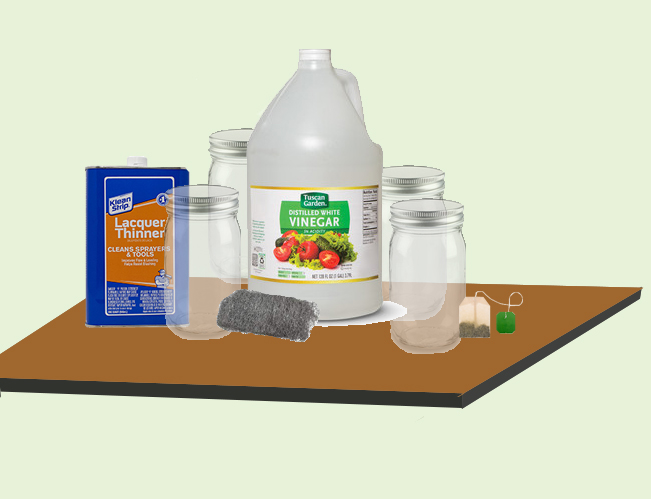This is an article about creating and using an ebonizing solution on a wood project.

To start, let’s consider what you need for ebonizing:
- A tea bag
- Water
- Lacquer thinner or other type of solvent
- White vinegar
- Some jars
- #1 steel wool
We’re going to use an iron vinegar solution as the ebonizing solution. However, many types of woods don’t have enough tannins in them to react with the iron vinegar solution. So, we’re going to add tannin first by applying tea. I just use regular tea but I’ve heard of folks using “Bark Tea.”
The steps to ebonizing are:
- Brew some tea, then let it age. I use an old clean jar with a lid and let the tea set for a few days, until some crud forms.
- Get some steel wool, #1 is fine.
- The steel wool needs to be cleaned with a solvent. I clean it three times by getting 3 containers, putting a couple of ounces of thinner in each container, and I dunk the steel wool in each container. After the dunking in the third container the steel wool is left out to dry completely. (Folks who ebonize a lot may do a whole bag of wool at a time so they always have it available.)
- After drying, I get a glass jar, place the dried steel wool in the bottom and pour white vinegar over the top. It should foam. The foaming lets you know the chemical reaction is working between the steel wool and vinegar. Let it sit for a couple days. If there is still bits of steel in the solution, filter it out before you put the solution on your wood.
- Now the fun part. I use foam brushes with this. Brush on the tea. You can put as much of it as you want. Then using another brush, spread on the iron vinegar solution. The wood will instantly turn black.
Alternately, there’s a FASTER way. Buy TransTint black dye (ex: https://www.veneersupplies.com/products/TransTint—Black-2-oz.html). It’s more expensive this way. Mix it with denatured alcohol and it won’t raise the grain.
Cheers
Sue
